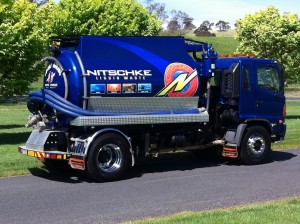
Washing up after a meal is not one of the most looked forward to activities in many households throughout South Australia. However, many people often forget that their kitchen sinks are useful for transporting the wash water to the drains, not scraps of rubbish. As such, it is hardly surprising that many people end up pouring waste cooking oil down the drain. Or, they could even scrape the waste off their plates into the sink. This practice could be quite costly over time.
The Role of Grease Traps in Commercial Kitchens
However, in many households, this issue does not become an overwhelming concern. This is primarily because of the size of the average household and the volume of meals prepared each day. In commercial kitchens though, this problem often assumes gargantuan proportions. Regular households often produce not more than three to five meals a day. This number rises to some hundreds in the case of restaurants and other dining outlets. The constant dumping of waste down the kitchen sink results in the rapid accumulation of waste particles in the drain pipes. At this rate, it doesn’t take long for the drain pipes to become blocked.
To counter this, the state municipal authorities require restaurants to use grease traps or grease interceptors. These devices are nothing more than receptacles placed between the restaurant drain lines and the sanitary sewer lines. These grease traps or interceptors help in separating and collecting the fats, oils and greases (FOG) from the wastewater. By doing this, the grease traps prevent these waste materials from entering the municipal sewer system.
How Do Grease Traps Function and What Do They Accomplish?
If you were to visit the facilities of smaller restaurants and cafes, you would be able to spot the grease traps indoors. These businesses typically require smaller sized grease traps. Hence, installing these devices indoors does not pose any problem. In contrast, larger restaurants and commercial kitchen establishments experience higher levels of traffic. Thus, they require larger grease traps. You’ll be able to spot these grease traps outside the facility. In many cases, these devices lie in the grounds outside the facility.
The role of grease traps involves separating the FOG content from the wastewater. These devices accomplish this by slowing down the flow of wastewater coming from the kitchen sinks in restaurants. The objective of slowing down the flow of wastewater is to allow the wastewater to cool down. It is worth noting that the FOG content in wastewater will coagulate as it cools. Thus, once the FOG has cooled to room temperature, it will float to the top of the grease trap.
Similarly, wastewater could contain other kinds of solid waste matter. This waste matter will usually be heavier in mass. As such, it will sink to the bottom of the grease trap. Once this process has taken place, the grease trap will allow the remaining wastewater to escape from the trap and enter the municipal sewer lines.
How to Maintain Your Grease Traps
As mentioned above, grease traps help in segregating the ‘pure’ wastewater from other kinds of waste material including FOG and solid waste. Thus, while the wastewater flows into the municipal sewer lines, these waste materials continue accumulating within the grease trap. Clearly, this cannot continue endlessly. If left unchecked, the solid waste matter would end up blocking the grease trap and making it entirely ineffective. Even worse, the ensuing wastewater would start flowing untreated into the municipal sewer lines. Over time, these sewer lines would develop blocks, resulting in fines and other penalties. In addition, you would need to spend a considerable sum of money for pumping out the grease trap as well.
To ensure that your grease trap functions at optimum levels, ensure that you:
- Monitor the levels of collected FOG and solids in the grease trap regularly
- Engage professionals to pump out the grease trap regularly
- Install and maintain appropriate pre-treatment devices for reducing contaminant levels in wastewater before the wastewater enters the grease trap
- Keep wastewater volumes and flow rates to the levels specified in the design capacity of the grease trap
- Avoid rapid discharge of large volumes of wastewater into the grease trap
- Ensure that the temperature of your wastewater does not exceed 38 degrees Celsius
- Use quick breaking detergents for releasing emulsified oil, grease and dirt immediately after discharge, which in turn, enables these materials to separate effectively in the grease trap
- Avoid using caustic soda as this could choke municipal sewer pipes
- Adopt good work practices such as:
- Avoiding pouring waste cooking oil down the sinks
- Scraping spoiled food and scraps from customer plates or from food preparation activities into a bin
- Avoiding the use of running water for thawing frozen food and,
- Using dishwashers only when you have a full load
Are You Looking for a Top-Notch Maintenance Service for Your Grease Traps in Adelaide?
Nitschke Liquid Waste is a fully certified and EPA-licensed company, operating from Adelaide. We have over 20 years of experience in pumping out, transporting, treating and disposing of all commercial, retail, hospitality, industrial and domestic liquid wastes and sludge. We’re a South Australian owned and operated family business. Thus, you support local businesses when you engage us for cleaning your septic tanks or grease traps. Among other things, we comply with all norms prescribed by the South Australian EPA. In addition, we meet all SA Water and OH&S requirements too. If you’re looking for reliable and cost effective services, call us at 8260 7660. We guarantee that you will love the quality of our services.



